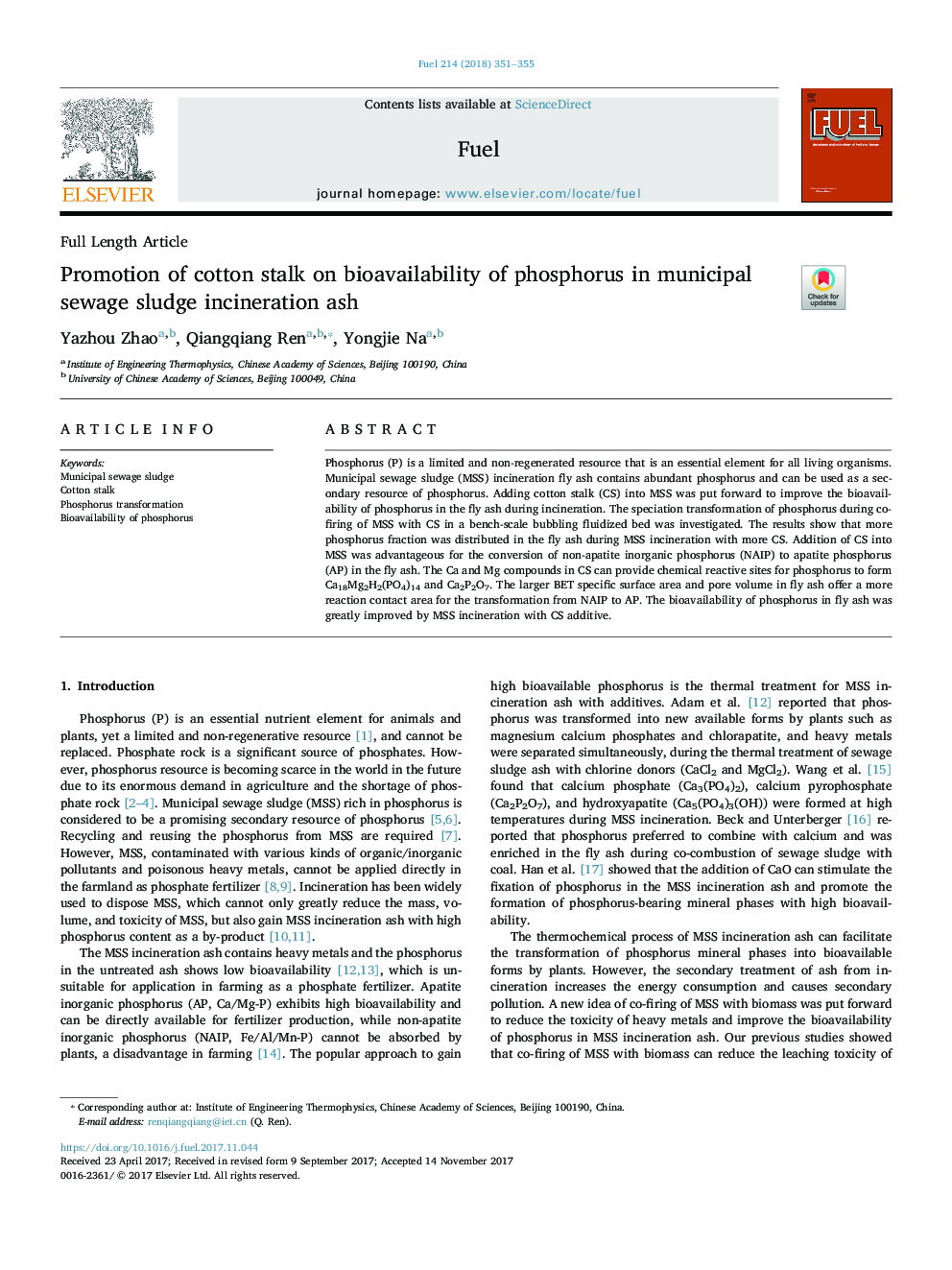| Article ID | Journal | Published Year | Pages | File Type |
|---|---|---|---|---|
| 6632509 | Fuel | 2018 | 5 Pages |
Abstract
Phosphorus (P) is a limited and non-regenerated resource that is an essential element for all living organisms. Municipal sewage sludge (MSS) incineration fly ash contains abundant phosphorus and can be used as a secondary resource of phosphorus. Adding cotton stalk (CS) into MSS was put forward to improve the bioavailability of phosphorus in the fly ash during incineration. The speciation transformation of phosphorus during co-firing of MSS with CS in a bench-scale bubbling fluidized bed was investigated. The results show that more phosphorus fraction was distributed in the fly ash during MSS incineration with more CS. Addition of CS into MSS was advantageous for the conversion of non-apatite inorganic phosphorus (NAIP) to apatite phosphorus (AP) in the fly ash. The Ca and Mg compounds in CS can provide chemical reactive sites for phosphorus to form Ca18Mg2H2(PO4)14 and Ca2P2O7. The larger BET specific surface area and pore volume in fly ash offer a more reaction contact area for the transformation from NAIP to AP. The bioavailability of phosphorus in fly ash was greatly improved by MSS incineration with CS additive.
Keywords
Related Topics
Physical Sciences and Engineering
Chemical Engineering
Chemical Engineering (General)
Authors
Yazhou Zhao, Qiangqiang Ren, Yongjie Na,
